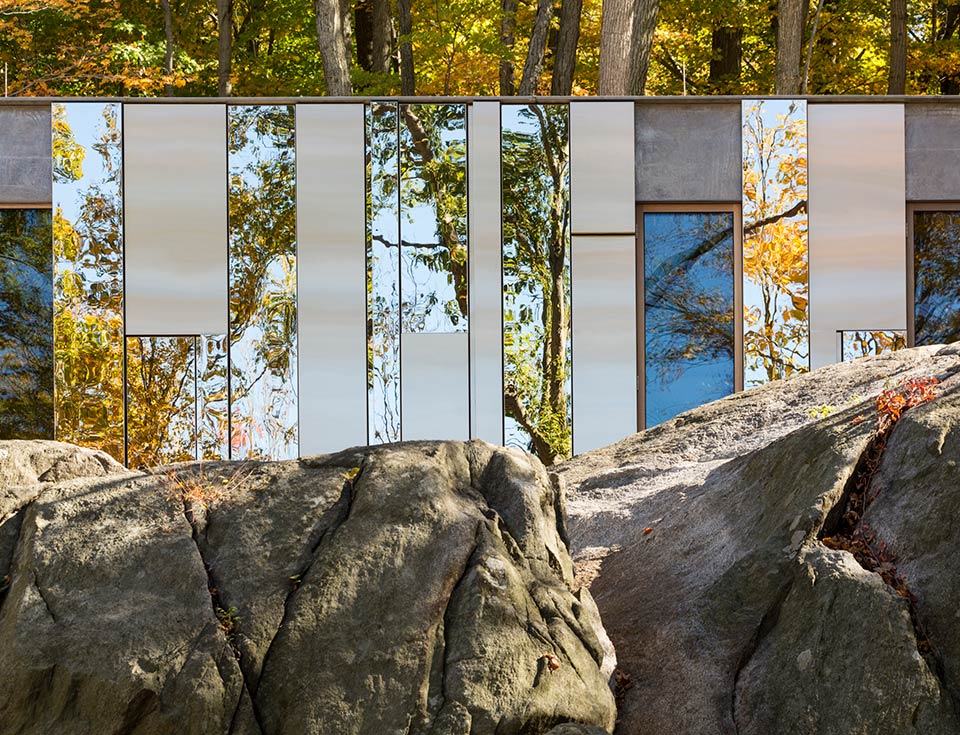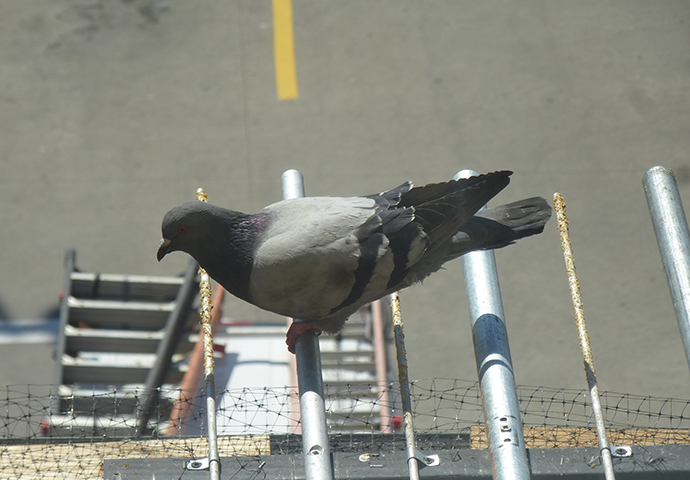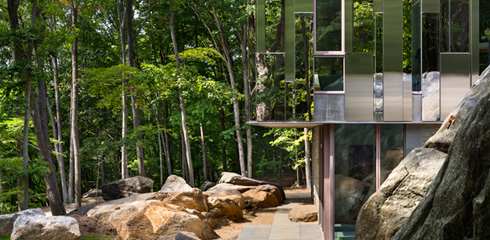Minimizing Bird Strikes With Facade Design
Smaller panels of varying levels of transparency help deter bird strikes at Pound Ridge House.
©Peter Aaron
Pound Ridge House, a private residence located north of New York City in Westchester County, New York, was recently featured in the Spring 2016 edition of Dwell magazine. The article, written by Aileen Kwun, draws attention to the care KieranTimberlake took in ensuring that the residence's signature reflective exterior would not pose a threat to local birds.
During the design process, the team sought to create a home with an exterior that blended in with the wooded site and an interior that brought the beauty of the natural landscape indoors. Designers knew they could create this desired effect with a glass facade, but also understood that the home's reflective surface could pose a threat to birds that frequent the wooded site. The question then became how to harness the beauty and function of a glass exterior without impacting birds and wildlife.
In earlier studies completed in partnership with the manager of the American Bird Conservancy's Bird Collisions Campaign, KieranTimberlake learned that bird strikes happen most frequently with large, continuous reflective surfaces. By using smaller panels with different levels of reflectivity, bird strikes could be reduced significantly. Using this information, designers created a facade composed of multiple rectangular tiles made of glass, brushed stainless steel, polished stainless steel, and tin zinc-coated copper. The different sizes and reflectivity of these panels not only greatly reduce bird strikes. As Kwun writes, "the benefits are also aesthetic: With its unique facade, the home is both attuned to the landscape and private, filled with 'curated views.'"







